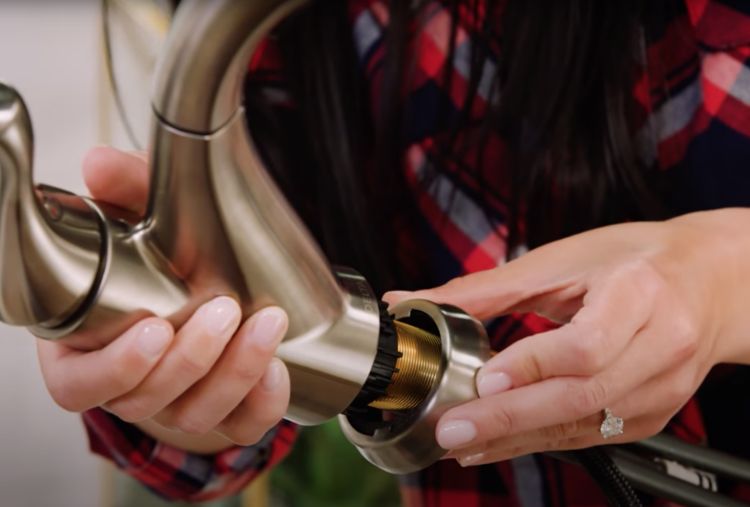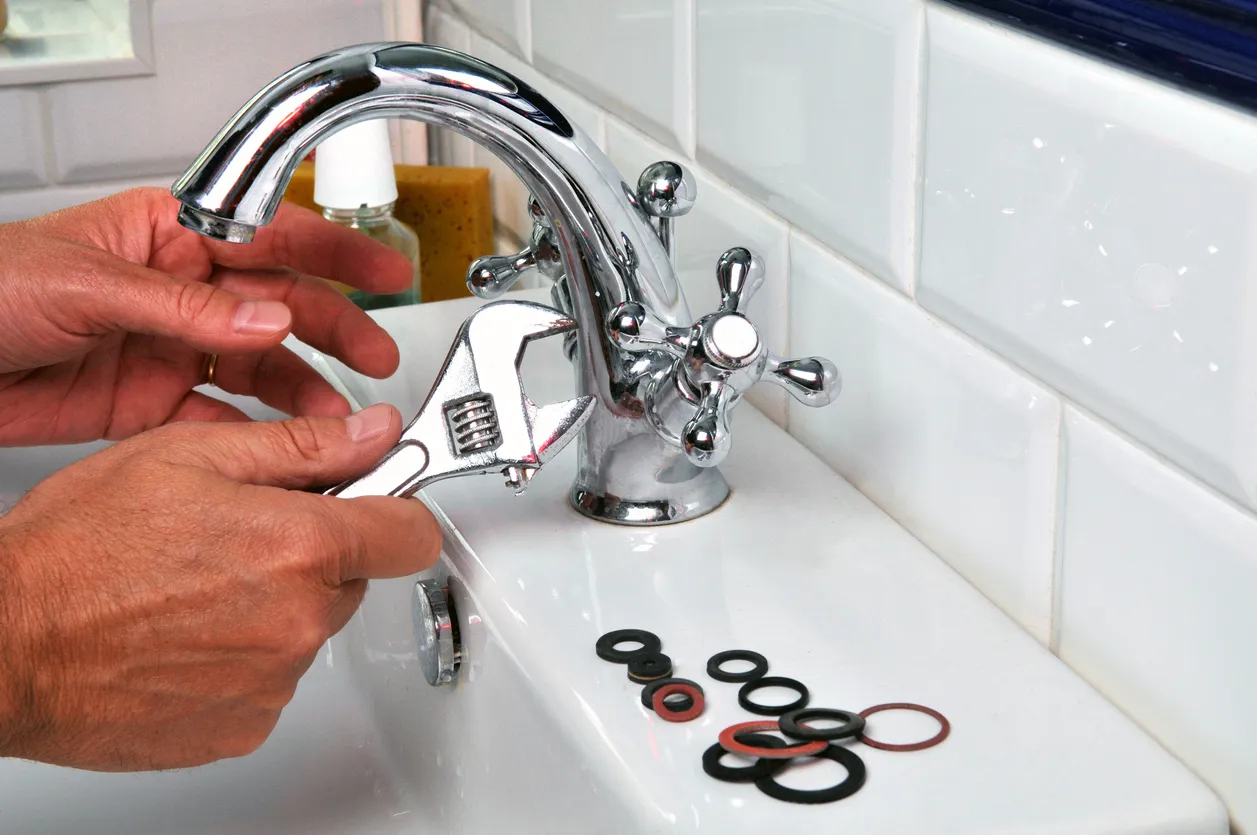How do you feel on the subject of Why It's Important to Fix Leaky Faucets?

Trickling faucets may feel like a minor trouble, yet their impact goes beyond simply the aggravation of the sound. From wasting water to incurring unnecessary monetary prices and wellness threats, ignoring a dripping faucet can result in various repercussions. In this short article, we'll explore why it's vital to resolve this typical family problem quickly and efficiently.
Wastefulness of Water
Ecological Effect
Leaking faucets add dramatically to water waste. According to the Environmental Protection Agency (EPA), a single tap leaking at one drip per second can throw away more than 3,000 gallons of water per year. This not just stress water sources however also influences environments and wildlife depending on them.
Step-by-Step Guide to Taking Care Of a Dripping Tap
Tools Needed
Prior to attempting to repair a trickling tap, gather the necessary tools, consisting of a flexible wrench, screwdrivers, replacement parts (such as washers or cartridges), and plumber's tape.
Typical Tap Issues and Their Solutions
Recognize the sort of faucet and the specific issue triggering the drip. Typical issues consist of damaged washing machines, corroded valve seats, or faulty O-rings. Refer to manufacturer instructions or online tutorials for step-by-step guidance on repairs.
Financial Prices
Raised Water Costs
Past the environmental impact, dripping taps can pump up water expenses significantly. The collected wastefulness with time translates into greater energy expenditures, which could have been avoided with prompt repair services.
Prospective Residential Or Commercial Property Damage
Additionally, prolonged trickling can result in harm to fixtures and surface areas surrounding the tap. Water build-up can cause discoloration, corrosion, and even architectural issues if left ignored, resulting in extra fixing costs.
Health and wellness Problems
Mold and Mildew Development
The consistent presence of wetness from a dripping faucet produces an ideal environment for mold and mold development. These fungis not just endanger interior air quality but also position health and wellness dangers, especially for people with respiratory system problems or allergic reactions.
Waterborne Conditions
Stationary water in trickling taps can end up being a breeding ground for bacteria and other pathogens, raising the threat of waterborne illness. Pollutants such as Legionella bacteria thrive in stationary water, potentially resulting in major diseases when consumed or breathed in.
DIY vs. Specialist Repair service
Advantages and disadvantages of DIY Repair Service
While some may try to repair a trickling faucet themselves, do it yourself repair work come with their very own set of difficulties. Without proper understanding and devices, DIY efforts can exacerbate the problem or bring about incomplete repair services, prolonging the problem.
Advantages of Working With a Professional Plumber
Employing a specialist plumber guarantees that the underlying root cause of the leaking tap is resolved effectively. Plumbing technicians have the experience and equipment to diagnose and repair faucet issues efficiently, saving time and minimizing the risk of more damages.
Ecological Obligation
Private Contribution to Conservation
Taking responsibility for fixing trickling taps lines up with broader efforts towards water preservation and environmental sustainability. Every person's actions jointly make a considerable effect on protecting priceless sources.
Lasting Living Practices
By focusing on timely repair work and adopting water-saving behaviors, people contribute to lasting living methods that profit both present and future generations.
Preventive Measures
Routine Maintenance Tips
To stop dripping taps, perform regular upkeep such as cleaning aerators, checking for leaks, and replacing damaged parts immediately. Additionally, think about mounting water-saving devices or upgrading to extra efficient fixtures.
Value of Prompt Services
Dealing with leaking taps as soon as they're observed protects against more water wastage and potential damage, eventually saving both water and money over time.
Effect On Building Worth
Assumption of Well-Maintained Property
Maintaining a residential or commercial property in good condition, including attending to maintenance issues like dripping taps, boosts its viewed value and desirability amongst prospective buyers or tenants.
Impact on Resale Value
Characteristics with well-maintained plumbing components, including faucets, command greater resale values in the property market. Attending to dripping taps can contribute to a favorable impression throughout home inspections and settlements.
Verdict
Dealing with a trickling faucet exceeds mere comfort; it's an important step towards conserving water, decreasing economic prices, and protecting health and wellness and building. Whether through DIY repair services or specialist aid, taking action to fix leaking taps is a little yet impactful means to advertise liable stewardship of sources and add to a much healthier, a lot more lasting future.
Why Are My Faucets Dripping (And Can I Fix it Myself)?
Causes of a Dripping or Leaking Faucet
Whether you’re hearing drops of water falling and hitting a sink, or noticing water ooze out from the base of the spout, you shouldn’t ignore a dripping or leaking faucet. And, the good news is, sometimes you can fix the problem yourself.
In this article, we’ll review a few common causes of dripping and leaky. We’ll also walk you through some basic ways to find the problem and handle it without calling anyone — and let you know when to call in a pro.
But, no matter what the cause, or whether you can handle it on your own, the sooner you address it, the better.
Each drip may be a tiny amount of water. But, they all add up quickly. According to the U.S. Geological Survey, one faucet losing one drop every 20 seconds — five a minute — wastes around a liter of water every day, and 173 gallons a year.
Add in more than one in your house, and it’s a lot of water to waste. So, we’ll help you get to the bottom of things quickly.
Four Reasons Your Faucet May Be Dripping
Aerator is Damaged or Unseated Valve Seat is Corroded O Ring is Loose or Worn Out Part of the Assembly is Loose Aerator is Damaged or Unseated
If you unscrew the end of your faucet, you’ll find the aerator. It’s the little stem piece with a screen on it that shuts off the water circulation.
If it’s damaged, or if it’s not sitting right, it will allow water to pass through.
Valve Seat is Corroded
Next is the valve seat, which is connected to the washer. If the washer wasn’t in place correctly, then it could have ground against the seat. Over time, this damages the valve seat.
The problem could also be corrosion: Over time, the part has worn out, and it’s now allowing water to pass through.
O Ring is Loose or Worn Out
Since the o ring is only a small rubber gasket, it’s a common reason why the faucet is dripping. You’ll find it at the base of the faucet, and it’s there to keep water from coming out where it’s not supposed to.
However, it’s common for the o ring to wear out over time. When it does, you’ll notice a drip.
Part of the Assembly is Loose
So far, we’ve looked at a few small, specific parts. But, the problem could be anywhere in the assembly if something’s out of place.
Even if a part isn’t damaged, over time, it may have become loose or dislodged. It could be the parts we mentioned, or the aerator at the tip of the faucet, the stem itself,
Can I Fix a Leaky Faucet Myself?
Depending on the problem, and how handy you are, there’s a chance you can fix a leaky faucet without calling a professional. But, you do run the risk of making the problem worse.
If it’s a small drip, you can certainly try a few troubleshooting tactics. We’ll walk you through them in a moment.
But, no matter what, your first step should be shutting off the water coming into the faucet. You should find a shutoff valve under the sink on the pipes leading to it. Turn each one clockwise until they close tightly.
Next, make sure you have the right tools for whatever you’re attempting. It’s tempting to make do with what you have. But, you need the right ones for a reason: You’re often dealing with small parts that can break if you handle them carelessly.
If you’re feeling confident, here are some places to start.
Items Near the Tip of the Faucet
A few of the parts we mentioned — particularly the valve seat and washer — are located at the tip of the faucet where the water comes out. They’re easy to access, making it a good place to start.
Check the O Ring
To check the o ring, you’ll need to take off the spout at the base. It’s easiest on kitchen sinks with long spouts, versus the smaller, bulkier base on most bathroom sinks.
Either way, this can be tricky, so do it carefully and don’t force anything. If it’s not coming right off, you’re much better off calling in a pro than possibly breaking something.
For a kitchen sink, there’s usually a nut or coupling assembly at the base of the spout. These often slide off easily without using any tools.
Once you’ve disassembled those parts, gently but forcefully twist off the spout.
Then, you can see the o rings. There should be two of the rubber gaskets on the base. If they look worn or damaged, replace them, and see if that solves the problem.

I'm just very excited about Why Are My Faucets Dripping (And Can I Fix It Myself)? and I'm hoping you appreciated our entry. Are you aware of another person who is fascinated by the subject? Take a moment to share it. We value reading our article about 4 Common Reasons for a Leaky Faucet.